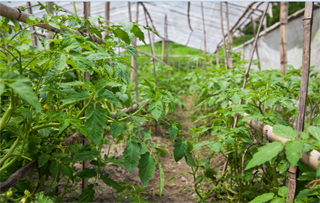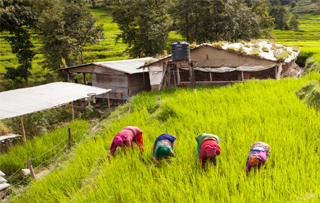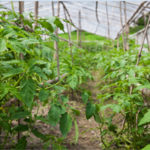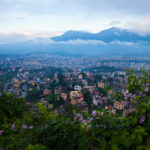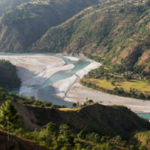Current Situation
- Agriculture accounts for 33% of GDP in Nepal.
- 1966 to 2000 forest cover declined from 45-29% of the total land area.
In Nepal, people have been continuously over-exploiting forest and forest resources. With almost two third of the population solely dependent on agriculture, farmers living in rural areas are rigorously misusing the resources. Trees are brought down to serve the purpose of fuel and fodder, increasing deforestation. This in turn causes soil erosions and landslides washing away fertile soil. Hence, it is very necessary to combine forest and agriculture ideas to address farmers’ multiple needs and conserve landscape, soil erosions and biodiversity simultaneously.
Project Goal
VIN aims to ensure sustainable food production and promote biodiversity as well as reduce erosion. By 2030, we hope that at least 50% of the targeted communities practicing agro forestry and agro farming.
Agroforestry has the strongest impact on poverty reduction (SDG 1), hunger alleviation (SDG 2), climate action (SDG 13), and biodiversity conservation and sustainable land management (SDG 15).
Project Description
The project is designed to ensure maximum benefit for the farmers by combining agriculture and forestry. By mixing trees or shrubs into their farming system, farmers can provide shade and shelter to protect plants, animals, and water resources, while also potentially generating additional income. Farmers can also save time in collecting fodder for their livestock and wood for cooking, and/or can make additional money by selling these products. In our landscape, Agroforestry is a great idea to minimize soil erosions and landslides. The project focuses on providing trainings and workshops to farmers to introduce agroforestry in their day-to-day farming practises.
As of 2020, VIN’s Agroforestry Project has been able support 141 people in marginalized communities of Nepal.
Gallery
Research/Reports
To know more about Agroforestry in Nepal, please visit the reports below:
Agroforestry Practices in Midhills of Nepal from Gender Perspective – By Deepa Paudel and others
AGROFORESTRY SYSTEM: AN OPPORTUNITY FOR CARBON SEQUESTRATION AND CLIMATE CHANGE ADAPTATION IN THE MID-HILLS OF NEPAL – By Krishna R. Tiwari and others

